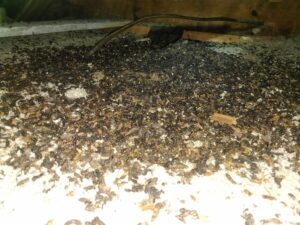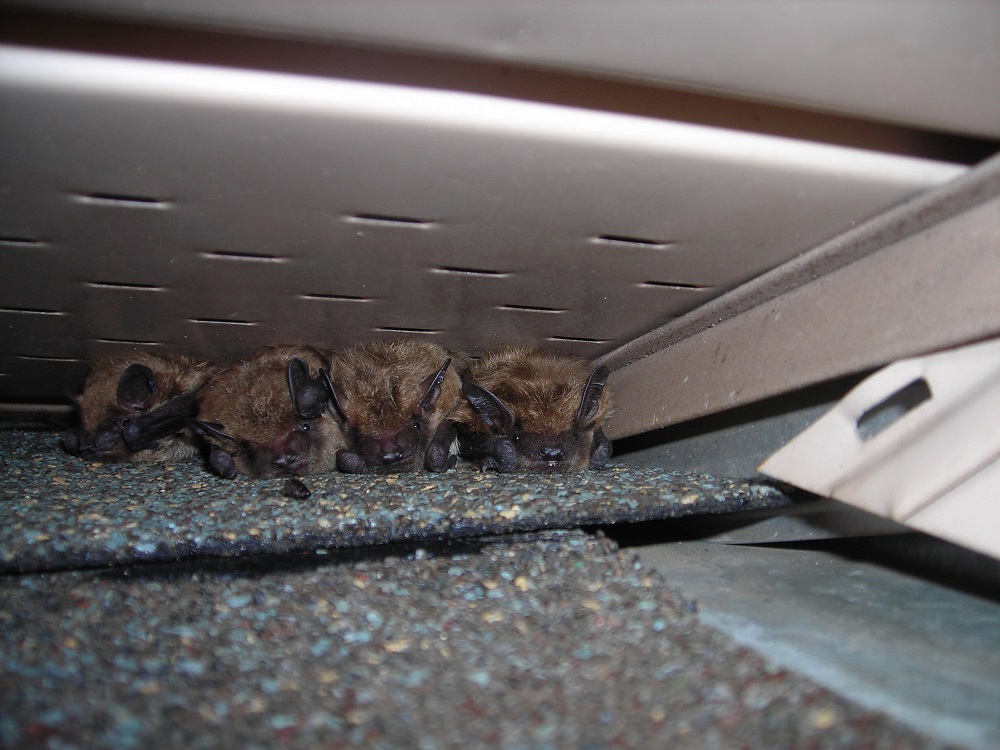Milwaukee’s Little Brown Bats at a Glance
Milwaukee’s Little Brown Bat is one of several bat species living in the region. This bat has the least appealing fur which has a dull brown color. In the winter, these bats prefer to hibernate in mines or caves. During this time their body temperatures fall to levels within the range of 40-50 degrees Fahrenheit. This facilitates a drop in metabolic activities which in turn causes the bat’s body to use up less energy. This is really the key behind this deep lengthy slumber and their ability to go through it without waking up to feed. But in the summer they roost in buildings; which leads to conflicts with the people who live in the space. This usually happens in April after they vacate their winter roosts in March. Like others in the species, the Little Brown bat uses echolocation to navigate the night skies and find food. This is a system of emitting sound waves and interpreting them as they bounce off objects ahead and return to the sender. The Little Brown Bat is an important part of Milwaukee’s ecosystem. These bats help to control pesky insect species by feeding on them. Each night one Little Brown Bat can consume up to 3000 insects eating at a rate of 500 of them per hour and this translates into more peace and comfort for Milwaukee citizens. When you think of it like that, the region’s Little Brown Bat deserves an award.Why Little Brown Bats are Problematic
 But there is a negative side to the story of these bats and this comes to light when their actions start to impact the human way of life. They make life inside a building uncomfortable through their droppings and urine as well as the disturbing sounds they produce when they flutter around occasionally. For people with a fear of bats, the discomfort is even greater especially when the bats fly around. But the more serious reason to consider the presence of the Little Brown Bat problematic is the rabies disease. In recent times, the disease has been showing itself more frequently in the bat population of the US. This means that there is a heightened risk of transmission to domesticated animals and people.
Although rabies is a disease we hear more about associated with wild animals, there are many others as well. Histoplasmosis is a respiratory illnesses and is caused by an airborne fungus called Histoplasma, which is found in bat droppings. Humans can be affected by the inhalation of the spores released by this fungus. Other emerging bat-borne viruses include Ebola and SARS.
But there is a negative side to the story of these bats and this comes to light when their actions start to impact the human way of life. They make life inside a building uncomfortable through their droppings and urine as well as the disturbing sounds they produce when they flutter around occasionally. For people with a fear of bats, the discomfort is even greater especially when the bats fly around. But the more serious reason to consider the presence of the Little Brown Bat problematic is the rabies disease. In recent times, the disease has been showing itself more frequently in the bat population of the US. This means that there is a heightened risk of transmission to domesticated animals and people.
Although rabies is a disease we hear more about associated with wild animals, there are many others as well. Histoplasmosis is a respiratory illnesses and is caused by an airborne fungus called Histoplasma, which is found in bat droppings. Humans can be affected by the inhalation of the spores released by this fungus. Other emerging bat-borne viruses include Ebola and SARS.



